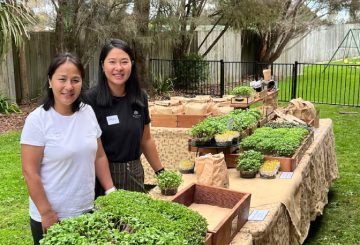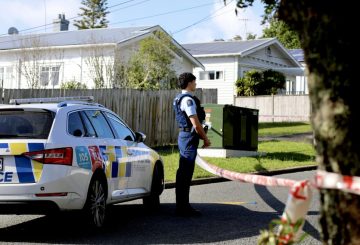Ipinagdiriwang ang Nymbl ng ACC, isang lakas at balanse app para sa mga matatandang matatanda, ang unang anibersaryo nito. Sa nakaraang taon, higit sa 33,000 mas matandang New Zealand ang na-download ng libreng app, na tumutulong sa kanila na manatiling matatag sa kanilang mga paa at mapanatili ang kanilang kumpiyansa.
Ang Nymbl ay dinisenyo upang matulungan ang mga matatanda na suriin, mapanatili, at mapabuti ang kanilang balanse. “Ang mga pagbagsak ay maaaring makaapekto nang malaki sa kalidad ng buhay ng isang tao, lalo na kung nagreresulta ito sa isang bali. Nilalayon naming maiwasan ang pagbagsak sa unang lugar,” sabi ni James Whitaker, ang nangungunang programa sa pag-iwas sa pinsala ng ACC.
Ang app, na inilunsad noong Abril noong nakaraang taon, ay bahagi ng programa ng Live Stronger for Longer ng ACC, na naglalayong maiwasan ang pagbagsak at pagkasira. Pinagsasama ng Nymbl ang mga simpleng paggalaw ng katawan sa madaling laro sa utak, tulad ng mga trivia, upang hamunin ang parehong isip at katawan. Ang diskarte na ito ng dual-tasking ay napatunayan sa agham upang mapabuti ang balanse nang mas mabilis kaysa sa pisikal na ehersisyo lamang.
Ang mga pagbagsak ang pinakakaraniwang sanhi ng pinsala sa New Zealand, na nagkakahalaga ng 39% ng lahat ng mga claim ng ACC. Ang pinaka-malubhang pinsala mula sa pagbagsak ay ang mga bali at pinsala sa ulo. Ang mga pagbagsak ay nagiging mas madalas habang nasa edad natin, na may isa sa tatlong tao na higit sa 65 na nasaktan ang kanilang sarili sa isang pagbagsak bawat taon. Tumataas ito sa isa sa dalawa kapag naabot nila ang 80.
Ang mga pinsala mula sa pagbagsak ay maaaring humantong sa pagkawala ng kalayaan, paghihiwalay sa lipunan, at kalungkutan, na maaaring dagdagan pa ang panganib ng pagbagsak at pinsala sa pagbagsak. Halos 30% ng mga taong may edad na 65 at higit pa na nakatira sa komunidad ay mahuhulog nang hindi bababa sa isang beses sa isang taon, at 10 hanggang 20% ang kakailanganin ng ospital.
“Nais naming tulungan ang mga New Zealand na manatili sa kanilang paa, tamasahin ang kanilang kalayaan, at mamuno ang buhay na gusto nila,” sabi ni James. “Nais naming alisin ang ideya na ang pagbagsak ay bahagi ng proseso ng pagtanda. Karamihan sa mga pagbagsak ay maiiwasan.”
Ang programa ng pag-iwas sa Live Stronger for Longer Injury ng ACC ay may dalawang tool sa pag-iwas. Una, ang Strength and Balance, na naihatid sa pamamagitan ng mga klase ng komunidad sa buong bansa o ng Nymbl app, ay naglalayong bawasan ang rate ng pagbagsak. Pangalawa, ang Fracture Liaison Services, ay naglalayong mabawasan ang rate ng pangalawang pagkasira ng kahinaan. “Nais naming suportahan ang mga matatandang New Zealand na magtrabaho sa kanilang lakas at balanse upang patuloy silang tamasahin ang kanilang kalayaan,” dagdag ni James.

















































-helped-regain-her-strength-and-balance-using-Nymbl-after-a-fall.-660x440.jpg)












